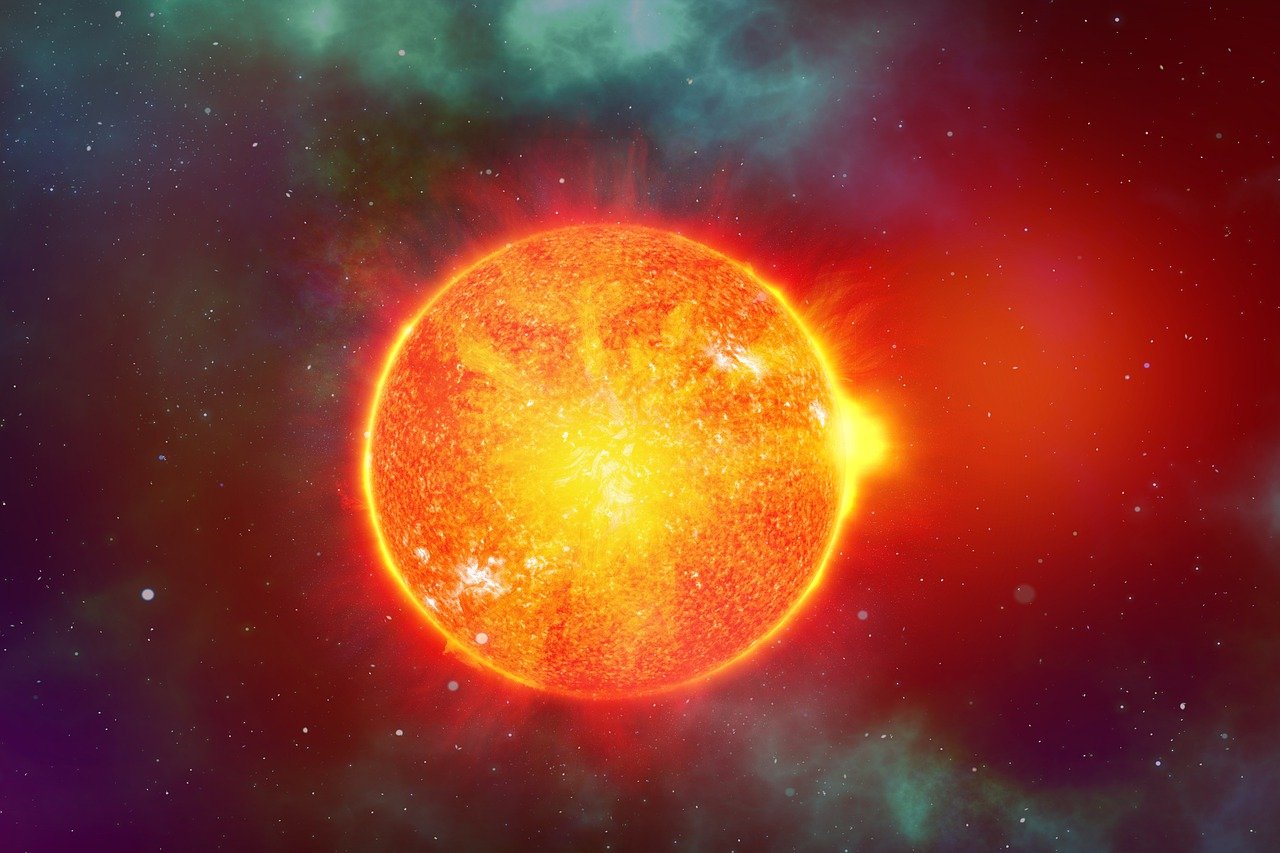
Vocabulary:
I will read the words, meanings, and sample sentences. Then, repeat after me.
- decade /DEK-eyd/
- erupt /ih-RUHPT /
- rotate /roh-TEYT/
- radiation /rey-dee-EY-shuhn/
- sequence /SEE-kwuhns/
[noun] – a period of ten years
The school has been open for a decade.
[verb] – to explode or burst out suddenly
The volcano can erupt at any time.
[verb] – to turn or spin around a central point
The Earth will rotate once every 24 hours.
[noun] – energy that comes from a source and travels through space and may be able to penetrate various materials
The sun gives off radiation that we can feel as heat.
[noun] – a series of related things or events, or the order in which they follow each other
He remembered the sequence of events leading up to the accident.
Article reading:
Please read the whole article. Then, I will check your pronunciation and intonation.
Recently, the sun released its largest flare in almost two decades, just after severe solar storms caused northern lights to appear in unusual places. The National Oceanic and Atmospheric Administration (NOAA) stated that the sun is not done yet, suggesting more activity could occur. This flare is the biggest in the current 11-year solar cycle, which is nearing its peak. Fortunately, Earth should not be affected by this flare since it erupted from a part of the sun that is rotating away from the planet. The Solar Dynamics Observatory, a NASA mission, captured the bright flash of the flare, which was rated X8.7, the most powerful since 2005. Bryan Brasher from NOAA’s Space Weather Prediction Center in Colorado noted that the flare might be even stronger when scientists examine additional data.
In the days leading up to this flare, there was nearly a week of solar activity, including flares and coronal mass ejections, which posed risks of disrupting power and communications on Earth and in orbit. Brasher mentioned that the coronal mass ejection linked to the recent flare seemed to be directed away from Earth, but further analysis is ongoing. A geomagnetic storm over the weekend caused one of NASA’s environmental satellites to rotate unexpectedly due to reduced altitude from the space weather, putting it into a protective mode called safe mode. At the International Space Station, the seven astronauts were advised to stay in areas with strong radiation shielding, although NASA assured that the crew was never in any danger. This sequence of solar events highlights the importance of monitoring space weather and understanding its potential impacts on Earth and human activities in space.
In the days leading up to this flare, there was nearly a week of solar activity, including flares and coronal mass ejections, which posed risks of disrupting power and communications on Earth and in orbit. Brasher mentioned that the coronal mass ejection linked to the recent flare seemed to be directed away from Earth, but further analysis is ongoing. A geomagnetic storm over the weekend caused one of NASA’s environmental satellites to rotate unexpectedly due to reduced altitude from the space weather, putting it into a protective mode called safe mode. At the International Space Station, the seven astronauts were advised to stay in areas with strong radiation shielding, although NASA assured that the crew was never in any danger. This sequence of solar events highlights the importance of monitoring space weather and understanding its potential impacts on Earth and human activities in space.
Discussion Questions:
I will read each question. Then, please answer them.
- Have you ever experienced a power outage due to a natural event? If so, what caused it, and how did you cope? If not, how do you think you would manage such a situation?
- Can you describe a time when you followed the news about a significant space event? What was the event, and why did it interest you?
- Do you agree that monitoring space weather is crucial for protecting technology on Earth?
- What do you think are the potential long-term effects of increased solar activity on our daily lives and technology?
- How do you think solar activity impacts global communication networks, and what strategies could be implemented to minimize disruptions?
Summarization
Please summarize the whole article using your own words and expressions. You will have one minute to prepare before you answer.
Describe:
Please explain the definition of each word listed below based on your understanding. You can provide example sentences if needed.
- recently
- capture
- examine
- danger
- impact